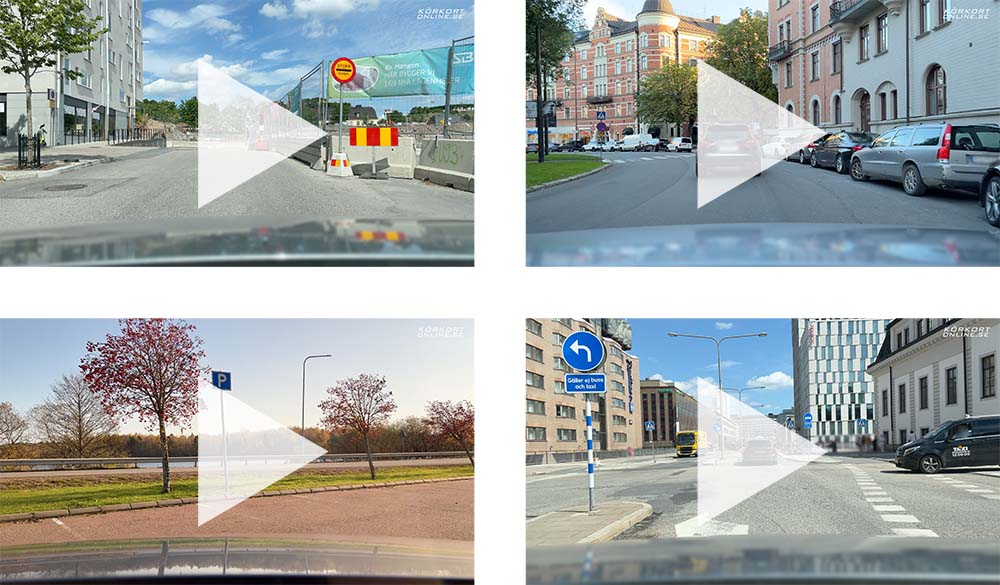Railway crossings and level crossings
What makes a railway crossing so special is the fact that the trains are unable to swerve (they can have a braking distance of 1 km), and they are also much larger than a car and drive at a much greater speed.
You are always obliged to give way to trains. This applies even if the lights are not flashing red.
A collision with a train is so serious that the lawmakers never want you to feel completely safe when crossing a railway. You must always be on high alert and all responsibility lies with you.
A level crossing is another word for a railway or tramway crossing.
The white lights are there to make the railway crossing easier to detect. They do not mean that it is safe to proceed. You must always check and make sure that no train is coming. If a train is approaching, you must give way, even if the lights are not flashing red.
Distance to a railway crossing
First, you will see the sign with 3 bars, then the sign with 2 bars, and finally 1 bar.

How to cross a railway safely
- Get an idea of the visibility
Do you already have a free line of sight at some distance away? Or are there trees or buildings blocking your view? - Adapt your speed to the visibility
If you have good visibility, you may not need to slow down at all. If visibility is poor, you should be prepared to stop. - Crossing
- Good visibility
Look both ways in good time before reaching the crossing and drive over at the same speed. However, remember that the tracks are uneven, so if you are driving faster than 70 km/h, you should still slow down. - Limited visibility
Slow down, shift to a lower gear (to give more power to the engine and avoid stalling), look both ways and then cross. Accelerating as you drive across is recommended. - Poor visibility
Stop before the crossing, look both ways and then drive across. Put the car in 1st gear and only change gear once the car is completely on the other side (to avoid stalling and other complications).
- Good visibility
Stalling on the track
If the engine stalls on the track, you must move the car immediately. If the engine will start, you can just keep driving. The barriers are made from a thin material that you can drive through.
If the car will not start:
- Manual transmission: Release the clutch and turn the key as far as you can in the ignition and keep it there. This will make the starter motor push the car forwards. Note that this does not work on all cars.
- Automatic transmission or unresponsive car: Get out and push the car. Remember to put the transmission in neutral.
If you are unable to move the car, call 112 to inform them of the situation.
Wait until the road ahead is clear. If you enter the railway crossing now, you may be forced to stop on the tracks, which is not allowed.
Overtaking at a level crossing
Overtaking in conjunction with a level crossing is prohibited, except where one (or both) of the following exist:
- Barriers.
- Traffic signals (red, amber and green).
The prohibition does not apply when overtaking two-wheeled vehicles.
Overtaking table
| Barriers | Signals (red, amber, green) | Allowed to overtake |
| Yes | Yes | All vehicles |
| Yes | No | All vehicles |
| No | Yes | All vehicles |
| No | No | Two-wheeled vehicles only |
Correct type of signal
This type of signal device is sufficient to override the overtaking prohibition, as it is a red, amber and green traffic signal.
This type of signal device is not sufficient to override the overtaking prohibition.
Different types of barriers
The barriers are often opened before the lights stop flashing. Note however that you may not drive on before the lights stop flashing red.
Full-length barrier

Half-length barrier

Latest forum posts
- << Overtaking
- Railway crossing ↑↑
- Special streets >>





